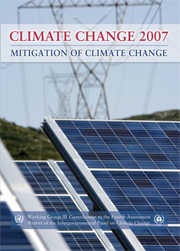 Climate Change 2007 - Mitigation of Climate Change
Climate Change 2007 - Mitigation of Climate Change Book contents
- Frontmatter
- Contents
- Foreword
- Preface
- Summary for Policymakers
- Technical Summary
- 1 Introduction
- 2 Framing issues
- 3 Issues related to mitigation in the long term context
- 4 Energy supply
- 5 Transport and its infrastructure
- 6 Residential and commercial buildings
- 7 Industry
- 8 Agriculture
- 9 Forestry
- 10 Waste management
- 11 Mitigation from a cross sectoral perspective
- 12 Sustainable Development and mitigation
- 13 Policies, instruments and co-operative agreements
- Annex I Glossary
- Annex II Acronyms, abbreviations and chemical compounds
- Annex III List of contributors
- Annex IV List of reviewers
- Index
7 - Industry
- Frontmatter
- Contents
- Foreword
- Preface
- Summary for Policymakers
- Technical Summary
- 1 Introduction
- 2 Framing issues
- 3 Issues related to mitigation in the long term context
- 4 Energy supply
- 5 Transport and its infrastructure
- 6 Residential and commercial buildings
- 7 Industry
- 8 Agriculture
- 9 Forestry
- 10 Waste management
- 11 Mitigation from a cross sectoral perspective
- 12 Sustainable Development and mitigation
- 13 Policies, instruments and co-operative agreements
- Annex I Glossary
- Annex II Acronyms, abbreviations and chemical compounds
- Annex III List of contributors
- Annex IV List of reviewers
- Index
Summary
EXECUTIVE SUMMARY
Industrial sector emissions of greenhouse gases (GHGs) include carbon dioxide (CO2) from energy use, from non-energy uses of fossil fuels and from non-fossil fuel sources (e.g., cement manufacture); as well as non-CO2 gases.
Energy-related CO2 emissions (including emissions from electricity use) from the industrial sector grew from 6.0 GtCO2 (1.6 GtC) in 1971 to 9.9 GtCO2 (2.7 GtC) in 2004. Direct CO2 emissions totalled 5.1 Gt (1.4 GtC), the balance being indirect emissions associated with the generation of electricity and other energy carriers. However, since energy use in other sectors grew faster, the industrial sector's share of global primary energy use declined from 40% in 1971 to 37% in 2004. In 2004, developed nations accounted for 35%; transition economies 11%; and developing nations 53% of industrial sector energy-related CO2 emissions.
CO2 emissions from non-energy uses of fossil fuels and from non-fossil fuel sources were estimated at 1.7 Gt (0.46 GtC) in 2000.
Non-CO2 GHGs include: HFC-23 from HCFC-22 manufacture, PFCs from aluminium smelting and semiconductor processing, SF6 from use in electrical switchgear and magnesium processing and CH4 and N2O from the chemical and food industries. Total emissions from these sources (excluding the food industry, due to lack of data) decreased from 470 MtCO2-eq (130 MtC-eq) in 1990 to 430 MtCO2-eq (120 MtC-eq) in 2000.
Direct GHG emissions from the industrial sector are currently about 7.2 GtCO2-eq (2.0 GtC-eq), and total emissions, including indirect emissions, are about 12 GtCO2-eq (3.3 GtC-eq) (high agreement, much evidence).
- Type
- Chapter
- Information
- Climate Change 2007 - Mitigation of Climate ChangeWorking Group III contribution to the Fourth Assessment Report of the IPCC, pp. 447 - 496Publisher: Cambridge University PressPrint publication year: 2007
- 3
- Cited by
